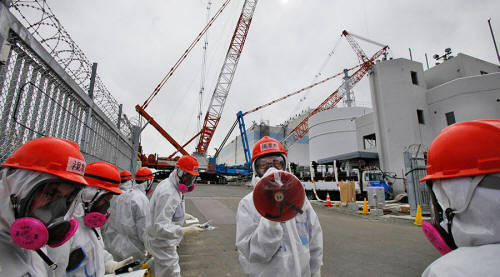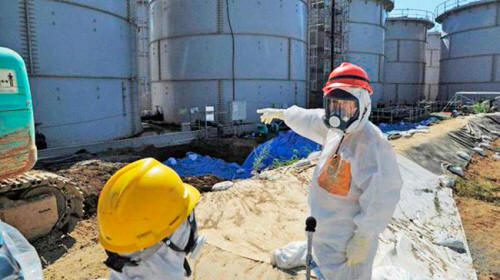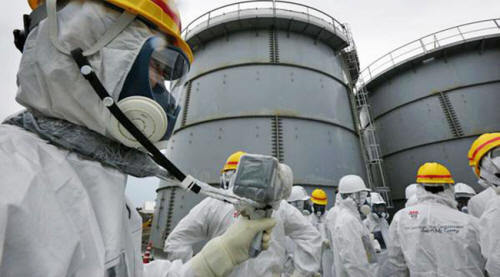|

26 September 2015
from
RT Website
Spanish version

Fukushima's reactor No.2 could have suffered a complete meltdown
according to Japanese researchers.
They have been monitoring the
Daiichi nuclear power plant since April, but say they have found few
signs of nuclear fuel at the reactor's core.
The scientists from Nagoya University had been using a device that
uses elementary particles, which are called
muons. These are used to
give a better picture of the inside of the reactor as the levels of
radioactivity at the core mean it is impossible for any human to go
anywhere near it.
However, the results have not been promising.
The study shows very
few signs of any nuclear fuel in reactor No. 2. This is in sharp
contrast to reactor No.5, where the fuel is clearly visible at the
core, the Japanese broadcaster NHK reports.
The team believes that 70 to 100 percent of the fuel has melted,
though they did add that further research was needed to see whether
any fuel had managed to penetrate the reactor
A report in May by the Tokyo Electric Power Company (TEPCO), which
is the plant's operator, said that a failure in reactor No.2's
pressure relief systems was one of the causes of the disaster.
The
team used a robot, which ventured into the building and measured
radiation levels at various places, while also studying how much
leakage had occurred from the control systems.

Source
TEPCO has used 16 robots to explore the crippled plant to date, from
military models to radiation-resistant multi-segmented snake-like
devices that can fit through a small pipe.
However, even the toughest models are having trouble weathering the
deadly radiation levels: as one robot sent into reactor No.1 broke
down three hours into its planned 10-hour foray.
Despite TEPCO's best efforts, the company has been accused of a
number of mishaps and a lack of proper contingency measures to deal
with the cleanup operation, after the power plant suffered a
meltdown, following an earthquake and subsequent tsunami in 2011.
Recent flooding caused by Tropical Typhoon Etau swept 82 bags,
believed to contain contaminated materials that had been collected
from the crippled site, out to sea.
"On September 9th and 11th, due to typhoon no.18 (Etau),
heavy rain caused Fukushima Daiichi K drainage rainwater to
overflow to the sea," TEPCO said in a statement, adding that the samples taken
"show
safe, low levels" of radiation.
"From the sampling result of the 9th, TEPCO concluded that slightly
tainted rainwater had overflowed to the sea; however, the new
sampling measurement results show no impact to the ocean," it
continued.

Source
A recent study (The
Fukushima Accident Was Preventable) by the University of Southern California said the
Fukushima disaster
could have been prevented.
One of the main faults
cited was the decision to install critical backup generators in
low-lying areas, as this was the first place the 2011 tsunami would
strike, following the massive earthquake.
Backup generators are a key part of any nuclear power plant - they
are essential to cool the plant in the event of power loss, in order
to prevent a reactor meltdown.
These generators were the first to be
affected by the disaster, which the author describes as,
"a cascade of industrial, regulatory
and engineering failures."
Unable to cool itself, the Fukushima Daiichi power plant's reactors
fell like dominos.
"What doomed Fukushima Daiichi was the elevation
of the EDGs (emergency diesel generators)," the authors say.
One
such generator was installed in the basement, while the others were
just 10 and 13 meters above sea level - an unacceptably low height,
according to
Costas Synolakis (see
The Fukushima Accident Was Preventable) of USC's Viterbi School of Engineering
in Turkey.
|




